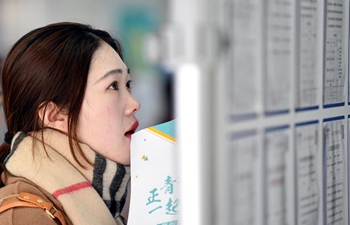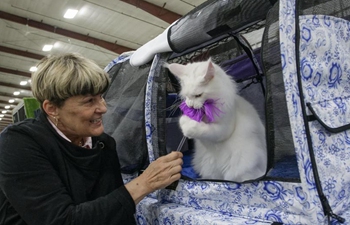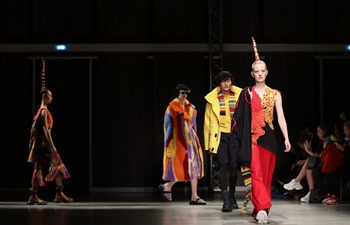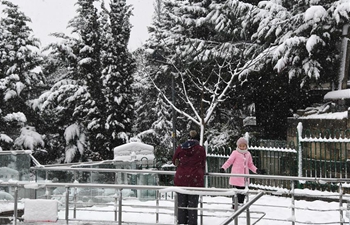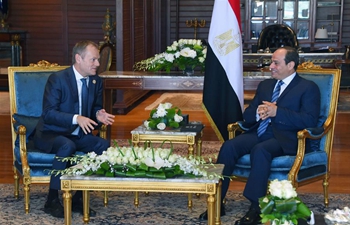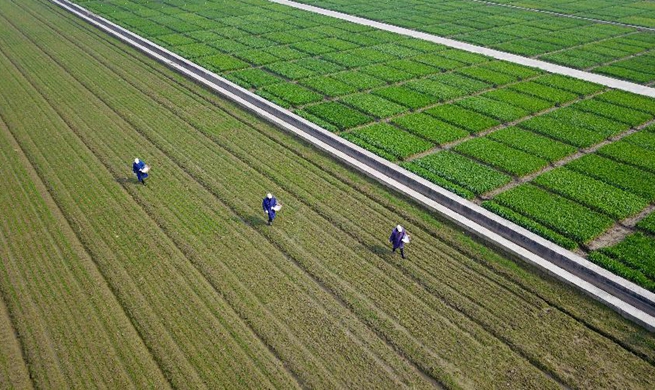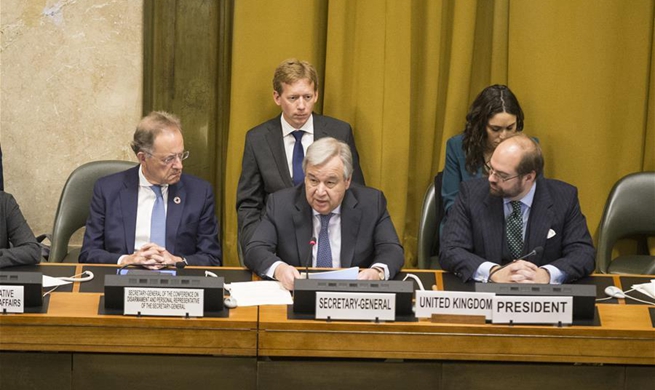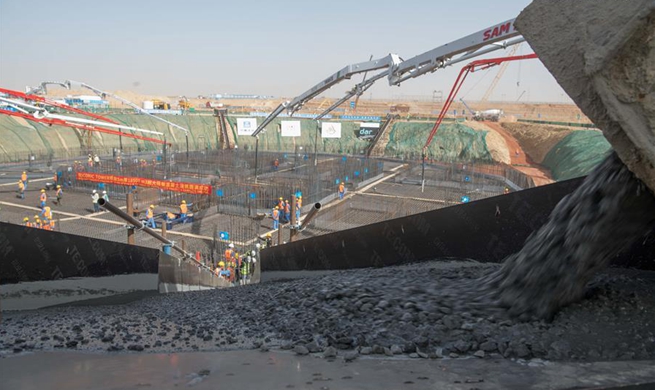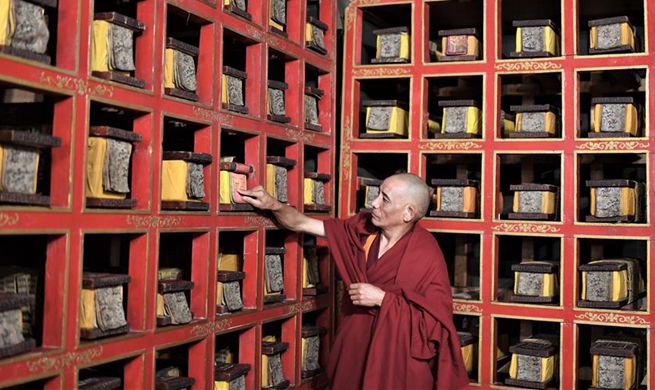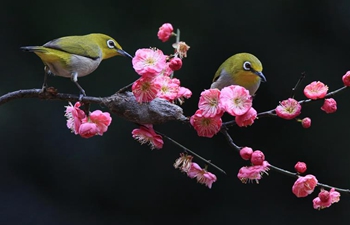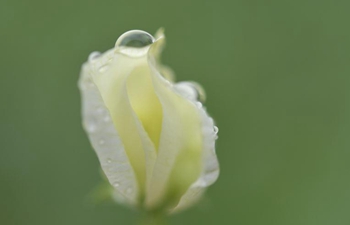BEIJING, Feb. 26 (Xinhua) -- 19-year-old Guo Haowen advanced the ball into the frontcourt before the buzzer sounded, as Team China beat Syria 90-59 in the qualifying round for the 2019 FIBA World Cup on Sunday in Beirut.
The game was Guo's - as well as his team's - last in the Asian qualifiers. In a series of qualifying games that began in November 2017, China - who would have featured at this year's World Cup regardless of their performance in qualifiers - won seven out of 12 games. Seven other teams, including Australia, South Korea and Iran, also progressed from the Asian qualifiers.
Whether Guo will feature on home soil later this year is yet to be decided, but he has already received his reward. "I just hope to improve and fit into the squad as soon as possible," the rookie said, after making his debut for the national team three days ago.
With Guo being China's first national team player born after 2000, his recruitment marks the temporary closure of an experiment that took place over the last 15 months. With China currently operating with a system of dual national teams - Team Red and Team Blue - a total of 41 players have been called up to play for their country, and many of them, like Guo, were first-timers in the national team.
"I thought it was fake news when they told me I was in the national team," said Abdusalam, who plays his club basketball with Xinjiang Flying Tigers. The 22-year-old played in eight qualifiers, with an average efficiency of 16.1 per game, ranking third among all 41 Chinese players to play in the qualifiers. It is difficult to recall that the national team's starting forward was merely a substitute for his club just two years ago.
Abdusalam might have waited longer for his moment of glory had China not implemented its system of dual national teams, a major step in the country's basketball reform plan. This sees Team Red and Team Blue, led by coaches Du Feng and Li Nan, playing in different international competitions before they merge into one later this year to prepare for the FIBA World Cup and the 2020 Tokyo Olympic Games.
Another talent rising from the qualifiers is Zhao Rui. Born in 1996, Zhao was still a freshman in the CBA league before being recruited to the national squad. He soon proved himself with his finishing ability at the rim, contributing 11 points per game and ranking fifth in points, behind only experienced players like Yi Jianlian and Zhou Peng.
Freed from the pressure of qualifying, these young players become the most valuable discoveries for Chinese basketball. "The reform gave young players more opportunities and allowed us to see their potential. In those key matches of high intensity and pressure, their performances far exceeded our expectations," said Li Nan, coach of both Team Red and the combined team which will compete at the 2019 FIBA World Cup.
Li's observation was proven in the last preliminary game before the merger. Trailing for three quarters, Team Blue pulled off a late comeback with a burst from Hu Mingxuan and Wu Qian in the final quarter to beat Jordan 88-79 in Beijing last September.
But challenges still lie ahead. Last Saturday, a newly-formed Team China with a younger average age than at any point during the qualifiers was trounced by the same Jordan side. The disappointing result served as a stark reminder of Yao Ming's words: "Though the two-team system is good for training the young, the time left for the whole team to prepare is shortened, and the final outcome remains to be seen."
The 2019 FIBA World Cup also serves as qualifying tournament for the 2020 Tokyo Olympic Games. With only one place up for grabs for Asian teams, China has to rank first among all Asian teams (apart from hosts Japan) that are competing at the World Cup. For the purposes of Olympic qualification, Australia and New Zealand will be classified as Oceanian rather than Asian teams.
"The intensity and the pace of international games differ a lot from the CBA league. Our players' weaknesses may be more easily exposed," said former Chinese national team coach Wang Fei, adding that the young national team should keep growing and learning in international competitions despite the difficulties that may lie ahead.




